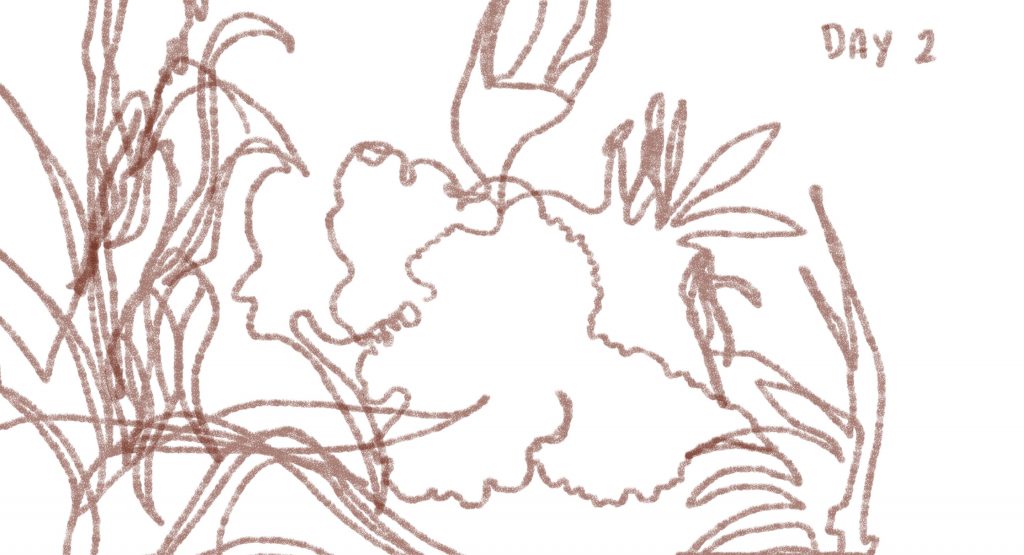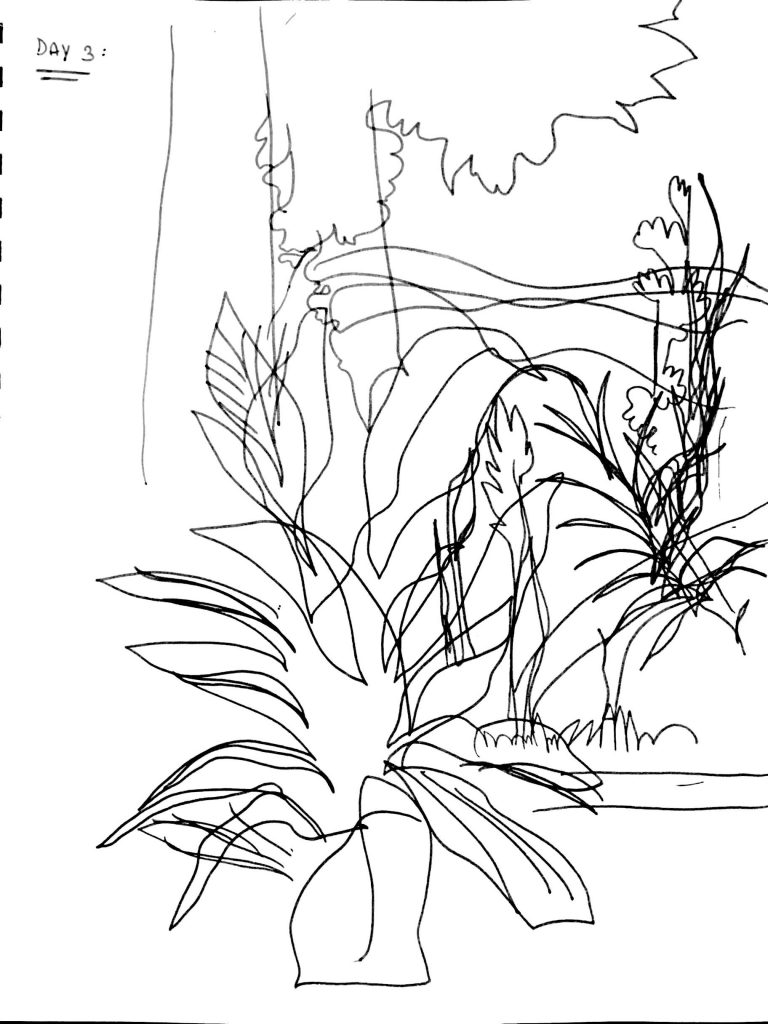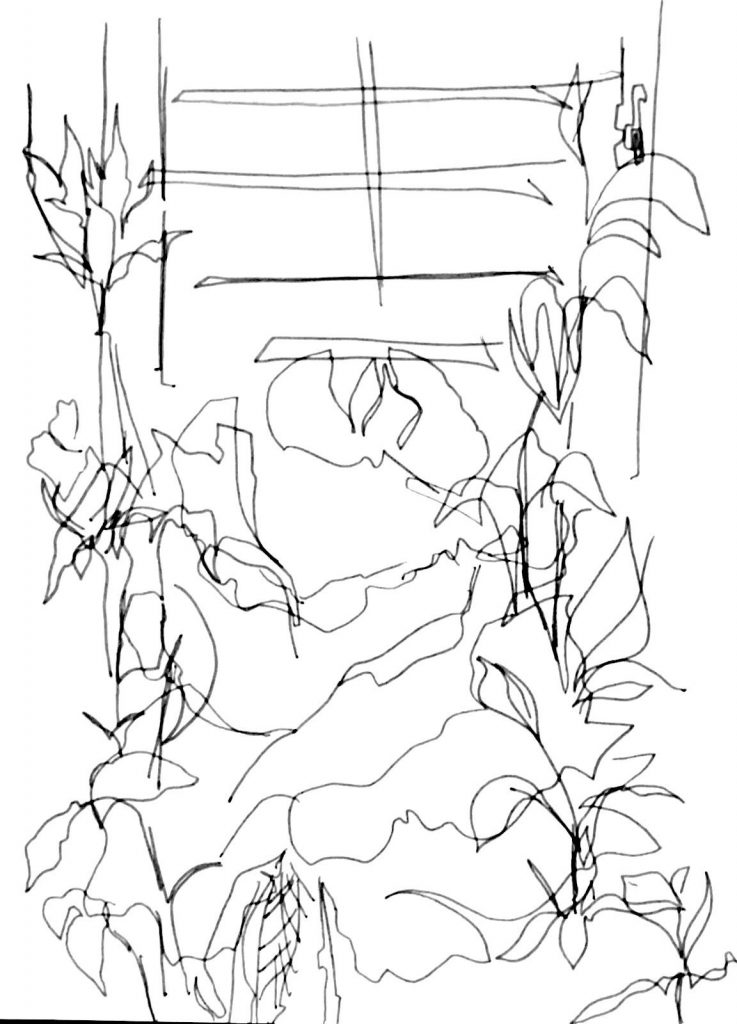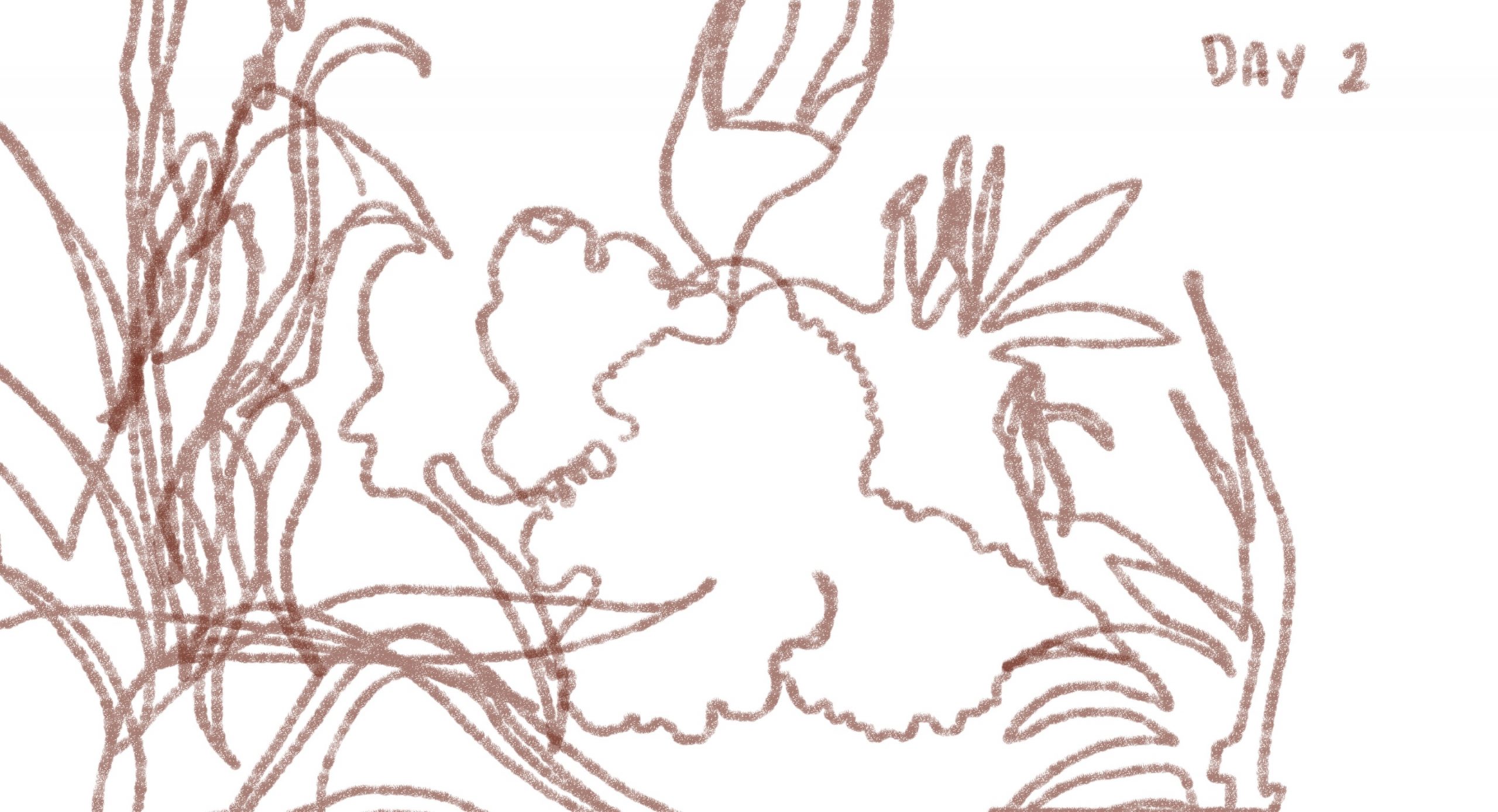Blind Contour Drawing — Week 1 (04.18-04.21)
For our second half’s home project, we were given a choice to focus on one project from a list of many. I initially planned to work on a different assignment, but due to personal matters and the loss of a loved one, I decided that blind contouring would be the best way to help me relax and explore my abilities as an artist. The process requires patience and involves using contour lines to describe an object without being able to see what you’re drawing. After a few tries, I can’t say I necessarily got the hang of it, especially when my brain urges me to check my drawing every few minutes, but I am learning more about the accuracy that comes with blind contouring.
Due to my situation, I wasn’t able to start my drawings from Monday, and instead started the week on Thursday instead. Normally, we’re supposed to draw for 30 minutes per weekday, so I’ll be restarting my week properly from today. My theme is plants since I have many of them to use as a reference at home. I also asked my friends to send in any shots of their garden when I run out of my own references. I like to draw flowers in my artwork, but of course, that is with intricate detail and is the complete opposite of blind contouring.

I started my drawings digitally because I thought I’d make use of my Wacom tablet and get the hang of digital tools. Technically, these tools are more versatile and have an array of textures to play with, but as a traditional artist, I instantly missed the feeling of having complete control of my medium and the paper underneath me. Also, it was difficult to draw freely because at one point, my cursor would stray outside the screen and tamper with the buttons and options instead, so I’d often have to look away from my reference (which isn’t the goal here) to get my pen back on track. Ever since then, I completely shifted onto traditional pen and paper.

My third attempt at blind contouring and my first attempt at doing it traditionally. 
My fourth attempt at blind contouring.
I prefer blind contouring traditionally since I don’t have to worry about the lack of space. I used a 9” x 12” sketchbook for these drawings, which was plenty of space for my hand to freely draw around.
Certain difficulties I faced in most of these drawings is, of course, the urge to check my drawing frequently, but I also started out with small strokes. It took me many tries to create a shape that was at least visible, if not recognizable. Within a few drawings, I gradually started drawing wider and all over the page. Another problem I noticed with my technique is that I tended to break my contour lines and start somewhere else. As you can see, my drawings don’t consist of one entire line, but rather, overdrawn lines from where I break and start off on again. I’m not sure if this is the correct way to blind contour, but from watching my professor’s tutorial on blind contouring, my drawings ended up slightly different.
Although blind contouring is not meant to accurate or recognizable, I felt a little insecure about my ambiguous drawings. I also worried that it may have resembled a shape or a plant in some way or form despite not looking at the drawing during the process. I covered my dominant hand with a cloth as I drew along to the reference taken on my phone. At first, the required 30 minutes of drawing seemed like an easy feat, but when I actually began drawing, 30 minutes felt exhausting and long. I think this is because I was pretty impatient and was under the impression that I had finished jotting down all the details I could find in the reference, when that certainly wasn’t the case. My references were also complicated. Whenever I was satisfied with the plant, I’d attempt drawing the background behind it. My biggest fear was overlapping the lines together since I couldn’t see where I was placing the background. At some point, some of my lines became muddled and it’s hard to tell what I was aiming for there.
One thing I think I’m developing is a better hand-eye coordination. This is something I had trouble with when I would do digital art. I was so used to looking at the paper whenever I drew, that having to stare at the screen and not my tablet was a little eye-wrenching at first. And the same goes for blind contouring on paper. I was afraid that my hand would go too astray and end up drawing outside of my paper, but that didn’t happen and I surprisingly was able to stop myself whenever I was close to the edge.
To wrap it up, my first week of blind contouring definitely wasn’t stable. I think I’ll rewatch the tutorials my professor provided so I can understand the process further since I’m not satisfied with my performance yet. I may be overthinking this—this method is supposed to be relaxing for the brain after all—but I look forward to using more shots of various flowers and see how my mind can interpret them with lines instead of just shapes.
